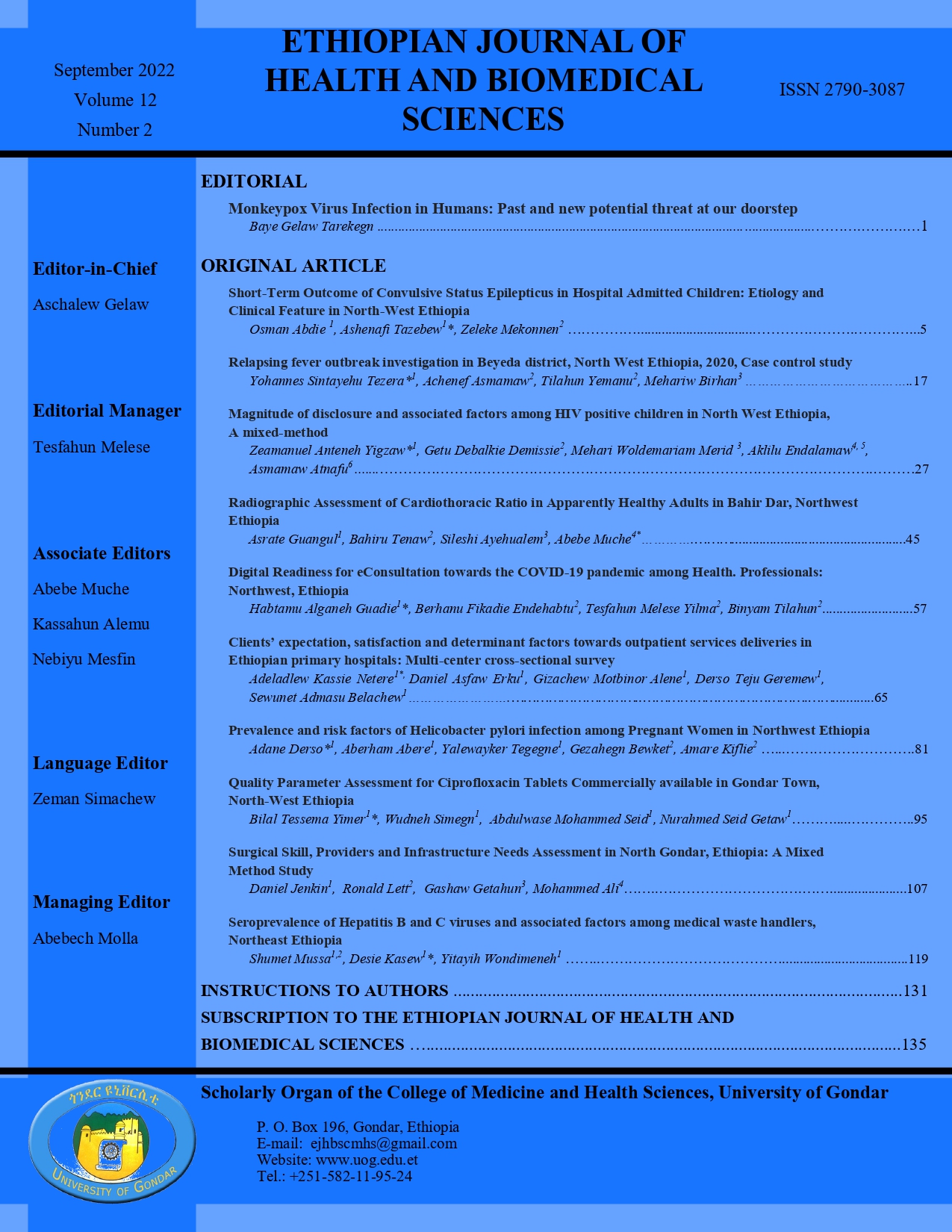Clients’ expectation, satisfaction and determinant factors towards outpatient services deliveries in Ethiopian primary hospitals: Multi-center cross-sectional survey
DOI:
https://doi.org/10.20372/ejhbs.v12i2.370Keywords:
Key words: Client, satisfaction, expectation, outpatient, primary hospital, EthiopioaAbstract
Introduction: Satisfaction is the measures of clients’ perceived positive feelings on the healthcare services they got after the service deliveries compared to their initial expectations. It is an integral tool which is used to measure the service deliveries. Although it is an integral tool to measure service deliveries, it is quite different across countries. The aim of this study was to assess the expectations and satisfactions of the clients on the outpatient healthcare service deliveries, and the determinant factors in Ethiopian primary hospitals.
Method: Institutional-based cross-sectional survey was conducted from October 2017- December 2017 in Ethiopian public primary hospitals which were selected using simple random sampling technique. We included 404 participants, and we allocated the respondents proportionally to each hospital. Essential information about the expectation and satisfaction levels of the clients was gained by administering structured interview and questionnaire prepared using a Likert scale of 1–5. Logistics regression was applied to describe a statistical significance of potential variables. P-value< 0.05 and 95% CI were used as cut-off points for determining the statistical significance of associations among predictor variables.
Result: Among the 404 respondents, more than half (57.7%) were males, and the mean (±SD) age was 33.6 ±12.3 years. Overall mean expectation on healthcare services and satisfaction level of the respondents was 74.7 % and 67.2%, respectively. Clients were satisfied with facility settings (71%), accessibility of information (69%), provisions of examination and consultation (68.8%). On the other hand, high service costs, fewer service accessibility and provisions (35.6%), longer waiting time (34.2%), disrespect of privacy (33.8%) and failure to maintain the good provider-patient interactions (33.6%) were the most dissatisfying components. Being civil servants (AOR: 0.304; 95%CI: 0.126-0.736); P=0.008) were more dissatisfied components rated by farmers. In contrast, availability of the prescribed drugs (AOR: 3.966; 95%CI: 2.068-7.606); P<0.001), clean environments (AOR: 2.139; 95%CI: 1.086-4.216); P<0.028) and equal service provisions (AOR: 5.73; 95%CI: 2.48-13.241); P<0.001) were the most satisfying factors.
Conclusion: Overall satisfaction levels of the clients on the healthcare service provisions were moderate. Facility settings, information accessibility, provisions of examination and consultation increase the clients’ satisfaction levels. However, it was compromised by unavailability of the prescribed drugs, high service costs, inaccessibility of service and provisions, long waiting time, disrespect of the privacies and failure to maintain good provider-client interactions. Improving the affordability and availability of service costs and accessibility, client-provider communications, clients’ perceived perceptions and facilitating service deliveries are recommended.


